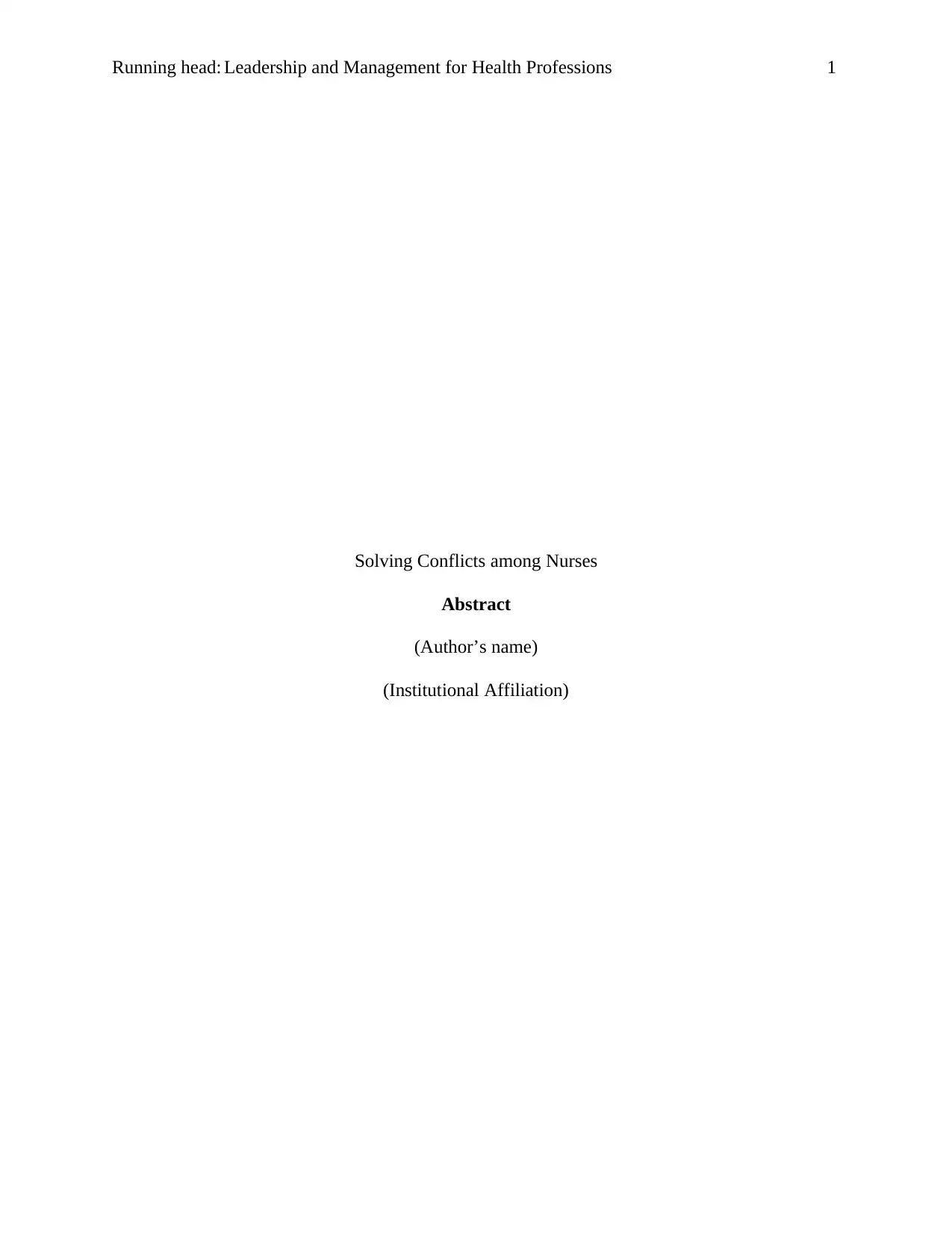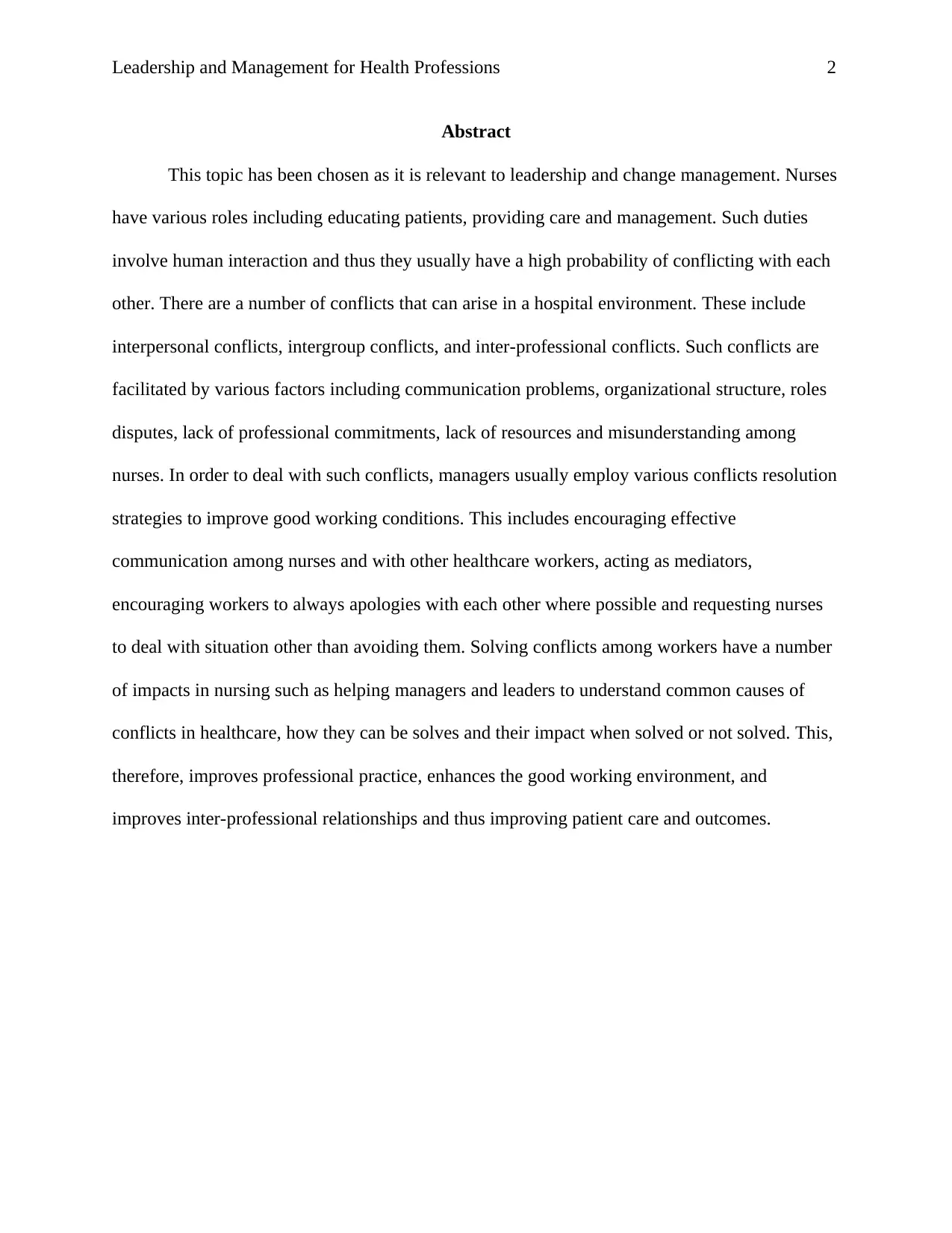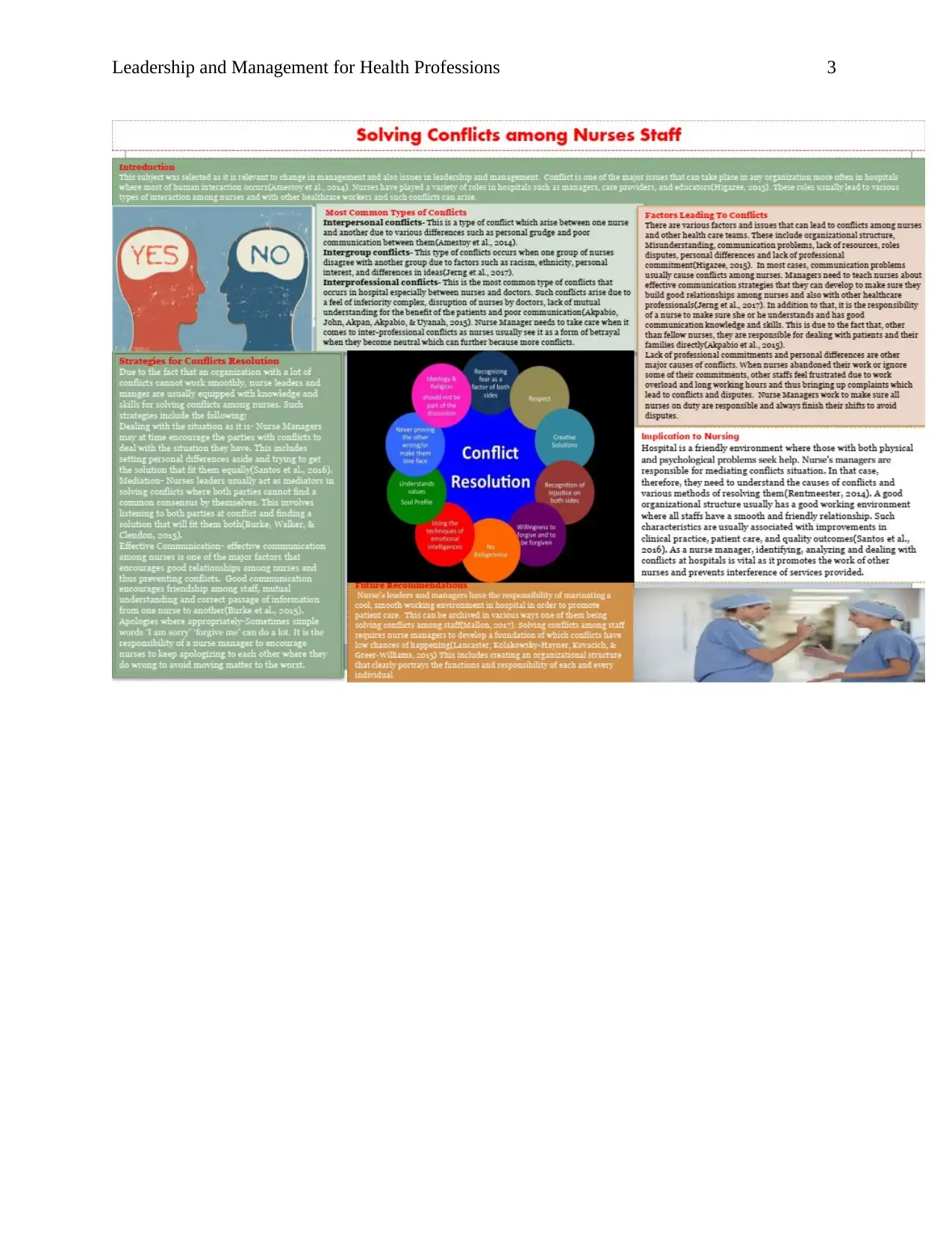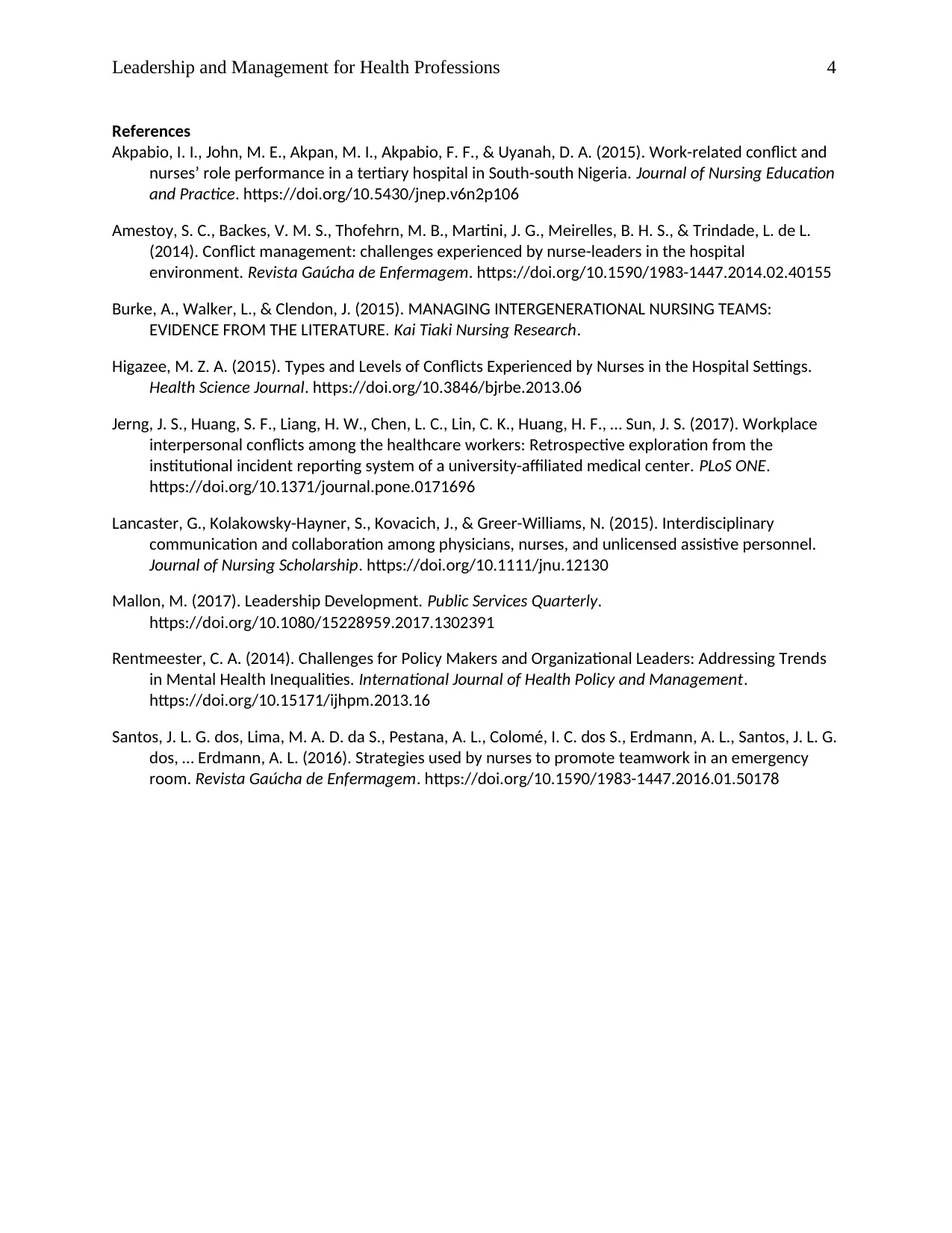Leadership and Management for Health Professions: Conflict Solutions
VerifiedAdded on 2023/06/08
|4
|681
|352
Report
AI Summary
This report examines conflict resolution strategies within nursing, emphasizing the importance of leadership and management in resolving disputes. It identifies common conflicts such as interpersonal, intergroup, and inter-professional disagreements, highlighting factors like communication problems, organizational structure, and resource scarcity. The report explores various conflict resolution methods, including promoting effective communication, mediation, and encouraging proactive problem-solving. It underscores the positive impacts of resolving conflicts, such as improved professional practice, enhanced work environments, better inter-professional relationships, and ultimately, improved patient care and outcomes. The document references several studies that provide further insight into the challenges and solutions for conflict management in healthcare settings.
1 out of 4











![[object Object]](/_next/static/media/star-bottom.7253800d.svg)